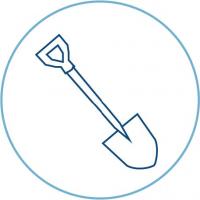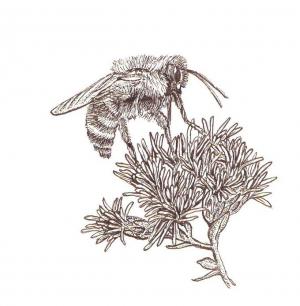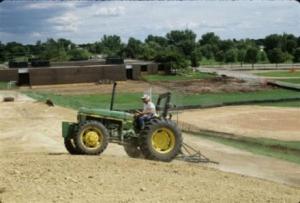Effective site preparation is essential to getting a buffer project off to a good start. Primary goals of site preparation are to control weed species and to provide ideal growing conditions for the seed or plants to be installed. Site preparation methods vary depending on past uses of the site and weed species present. The protection of soil microorganism populations and native seedbanks, preventing soil erosion, and minimizing weed establishment are all part of the site preparation process. In most cases, non-herbicide methods are preferred over herbicide-intensive methods in order to protect aquatic organisms and soil microfauna, but herbicides may be the most efficient method of controlling some invasive perennial species. Links are provided below for more detailed information in the Minnesota Wetland Restoration Guide.
Transitioning from Other Uses
Many buffer plantings transition from corn or soybean production. Fields that are in active cultivation often have most weeds under control, though additional spot treatment of species such as Canada thistle is sometimes needed in the fall after harvest. If a site is in perennial weeds such as smooth brome, quack grass, or bluegrass and cannot be put into agricultural production for one or two seasons, intensive site preparation may be needed for the control of perennial invasive species that have extensive rhizomes. Herbicide application is recommended, as tilling alone may re-suspend the rhizomes, allowing them to continue growing. For species such as reed canary grass and giant reed grass, combinations of mowing, herbicide application prescribed burning, and tilling (or possibly additional herbicide application) may be needed. The “Minnesota Wetland Restoration Guide”
provides detailed management recommendations for a wide range of species.
For small buffers such as residential lakeshores, perennial weeds may be dug with shovels or garden forks, making sure to remove all of the rhizomes. Heavy mulches or clear plastic cover (solarization) have also been used as part of site preparation for small areas. When removing sod, sod kickers, sod cutters, or other mechanical equipment can be used to remove roots and weed seeds.
Grade smooth or fill the filter strip area prior to seeding to eliminate rills and ephemeral gullies. In addition, scraping with backhoes and bulldozers is sometimes conducted for species such as reed canary grass and giant reed grass, or to remove fill materials or sediment that has deposited in wetlands or along shorelines. An advantage of sediment removal is that it can expose remnant native seedbank. Shallow scraping, mechanical raking or brushing, or other means to remove the duff layer from a site can aid the control of species such as cattails, giant reed grass, and reed canary grass
Deep rooted prairie plants have the potential to plug perforated drain tile. In situations where perforated tile passes under buffer zones, it may need to be replaced with non-perforated tile.
Inundation can be used for the control of perennial weeds in some cases. This technique requires the ability to retain water. Inundation should be initiated early in the season when the target species is short and snowmelt is contributing to water levels. Mowing to decrease vegetation height is recommended if inundation is started during other times of year. It may take a full growing season at a depth of one to two feet to accomplish full removal, so sufficient hydrology is necessary. Reed canary grass on the edges of the inundated areas will likely require herbicide treatment. A plan should be in place to control seedlings following inundation.
Seedbed Preparation
Methods that are used to prepare a seedbed vary depending on the type of equipment to be used. For a traditional native seed drill, a smooth, firm
seedbed is required. Soybean fields are sufficiently prepared for a native seed drill but sites that were recently tilled will require additional soil treatment such as harrowing and rolling to prepare an adequate seedbed and prevent seed from being buried too deep. Broadcast seeding can be conducted on soybean or corn fields, or fields that have been disked, as long as the soil is allowed to settle before seeding. Some practitioners have found that broadcast seeding on a smooth surface (not tilled or disked) leads to the establishment of higher diversity. It is important that the soil surface is not too hard-packed, so cultipacking or light harrowing of crop fields before broadcast seeding may be needed. Seed can be lost on smooth surfaces due to wind or hungry birds, so it may be beneficial to seed into a cover crop or roll sites after seeding.
For sites where containerized plants will be installed, a firm, weed-free surface will aid planting efforts and ensure that soil will not bury seedlings after rainfall. Lakeshore plantings commonly use wood mulch or rrosion control blankets to suppress weeds and stabilize soils. Lakeshore plantings may also use bio-logs or wattles to decrease wave energy, fencing to deter geese, and, in some cases, wave-break structures.




